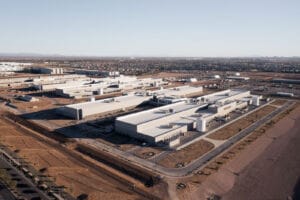The landscape of the Valley’s real estate market in the mid 1980s was vastly different from today, but, as most developers are painfully aware, many of the challenges are markedly the same. What is different today is the solid foundation that has been built over the past 25 years, which has helped the Valley remain an extremely attractive place for businesses and residents to call home.
Twenty-five years ago, the biggest challenge in the market was tied to the fact that we had virtually no transportation infrastructure. Commuters today might have more traffic to contend with, but at least we have more freeways. In the mid-80s, drivers had long and incredibly laborious commutes to an employment base that was quite limited in variety. Of course, 25 years ago, a commute into Phoenix from Surprise, Goodyear, Gilbert and El Mirage was unheard of.
The Valley’s expanded transportation infrastructure has opened up all of these new submarkets and allowed for an effective and functional distribution of goods and population. The I-10 was finally completed through Downtown Phoenix in 1990. The Scottsdale Airpark has grown into the second-largest office submarket in the Valley. Highway 51 and the loops 101 and 202 were constructed.
Our metro area has now grown so large in size and population that companies and retailers have multiple locations and stores. Larger warehouse facilities were built on the west side of the metro area near the I-10 transportation corridor. We began to see mixed-used projects of a large scale. The Phoenix industrial market benefited from steady job growth, great positive inward migration and affordable housing.
In addition, the Arizona Department of Real Estate has played a major role in planning future growth, establishing land values, encouraging competition and adding substance to our educational trust fund. The growth of local, competent developers in every development discipline has also contributed to shaping the sector.
But the major challenge today, like that of 25 years ago, is an abundance of available space coupled with a very low level of tenant activity. Based on typical annual absorption rates, new speculative construction will take another two-to-three years to occur. Dramatically reduced valuations are another major problem affecting all of commercial real estate. No one knows what anything is really worth. This, coupled with the lack of capital for permanent financing, has brought development to a halt and continues to negatively impact values. Add high unemployment, slow retail sales and difficulty in home sales, and you have a very long pause that seems vaguely familiar to the situation of the 1980s.
However, pauses end. There is definitely a bright future ahead for Valley real estate. Unlike the 1980s, today we have excellent infrastructure we can build upon to rise out of this crisis much more quickly and effectively. What’s more, people will still want to move here. We will benefit from relocated businesses and jobs as other states tax and regulate their economies to the extreme. This slowdown is temporary. But we have to remember that Arizona will continue to attract businesses and residents, and we must stay poised to develop opportunities for them as they become more available.




